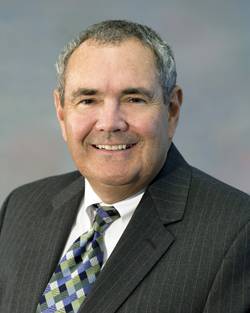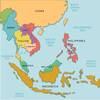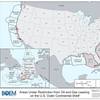WCI's Michael Toohey Testifies Before House Subcommittee
WCI President testified before House Water Resources & Environment Subcommittee on substantial economic importance of inland waterways system navigation projects, once completed, will provide jobs and billions of dollars for american economy.
Michael J. Toohey, President and CEO of Waterways Council, Inc. (WCI), testified today before the House Transportation & Infrastructure Committee’s Water Resources and Environment Subcommittee on “The Economic Importance and Financing Challenges of Recapitalizing the Nation’s Inland Waterways Transportation System.” Mr. Toohey addressed the growing needs of the U.S. inland waterways transportation system, and recommended the Inland Waterways Capital Development Plan as the path forward to improve the reliability of that crucial system and its infrastructure over the next 20 years. Modernizing our Nation’s waterways transportation system could result in the creation of American jobs, increased exports and billions of dollars injected into the lagging U.S. economy.
If adopted by Congress, the Capital Development Plan would provide more efficient funding for critically needed waterways infrastructure improvements that also benefit non-transportation users and the Nation as a whole. The Plan calls for the efficient completion of more than 20 navigation projects over 20 years by American workers in family-wage jobs rather than just six projects in the same timeframe under the current broken funding/business model. It would better utilize taxpayer dollars by completing projects on time and on budget.
“The inland waterways system is one of this country’s greatest assets. For over 200 years, our river system has facilitated affordable, reliable and environmentally friendly transportation of the building blocks of our economy. It has allowed the low cost movement of large bulk commodities in an efficient and timely manner. But, despite all of these advantages, our inland waterways infrastructure is suffering and in need of immediate modernization,” Toohey testified. Specifically, Mr. Toohey cited the Olmsted Lock and Dam Project on the Ohio River on the border of Illinois and Kentucky as “the most glaring example of the deficiencies of the current system.” “Olmsted was authorized by Congress in 1998 at $775 million with a projected 12-year construction period. Unfortunately, the cost for the Olmsted project, the construction of which is far from complete, has ballooned to $2.1 billion 26 years later. And, just in the past month, the Corps of Engineers has advised stakeholders that the cost of the Olmsted project is due to change ‘significantly’ yet again. … The Olmsted project, together with numerous other similar projects throughout the inland system, underscore the notion that the business model for financing navigation projects in this country is seriously broken,” he testified.
Mr. Toohey also stated, “the right 20-year inland waterway investment plan must achieve a number of objectives. It must:
- provide additional revenues to the Inland Waterways Trust Fund in a reasonable and supportable fashion,
- prioritize the Nation’s investments in modernizing the inland waterway system infrastructure using sensible, objective decision criteria,
- recognize and account for the multiplicity of beneficiaries of the system, only one of which is the barge industry,
- protect the commercial users that cost-share the construction of these projects from unreasonable project cost escalation and delay,
- provide a clear delineation of what is and what is not a recapitalization project, and,
- improve the internal procedures and project delivery performance of the Corps of Engineers so that these projects more often will be completed on time and within budget.”
To date, the Capital Development Plan is supported by more than 200 industry stakeholders including national organizations, state, regional and local organizations, and companies. Among those which have endorsed the plan are the United States Chamber of Commerce, the National Association of Manufacturers, American Land Conservancy, National Corn Growers Association, National Grain & Feed Association, Steel Manufacturers Association, National Mining Association, National Council of Farm Cooperatives, and many others from diverse segments of the waterways transportation industry. The complete list of supporters can be found at www.waterwayscouncil.org.














